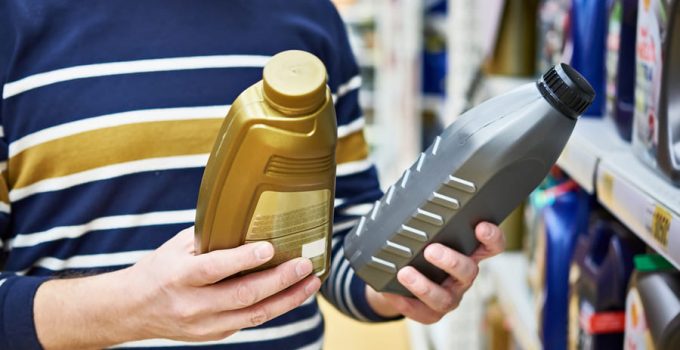
Manufacturers label the motor oils they produce with codes and numbers that confuse many car owners. We will try to help you understand this.
Contents
What properties should motor oil have?
Motor oil should have the following characteristics:
- Solid results in cleaning engine components from insoluble impurities.
- High thermal stability and resistance to thermal oxidation.
- Compatibility with sealing materials that are not aggressive to metal parts.
- A sufficiently thick slip film to avoid abrasion and wear of the adjacent surfaces.
- Special additives, for example molybdenum disulfide, are often used for this purpose.
- Its original properties for a long time Keep time.
- Optimum viscosity at any temperature, efficient lubrication of adjacent surfaces when the engine is cold and preventing their wear in hot weather.
- Resistant to foaming.
- A low volatility to minimize the environmental impact.
Motor oil composition: what are the differences?
Depending on their base, the type of bearing and the Proportions of the different additives, there are usually 3 types of engine lubricants:
- Mineral. These are lightly distilled petroleum that has been further purified with acid or by extraction with solvents. Often they are labeled as a mineral. These lubricants have a high viscosity. When heated, they evaporate fairly quickly and become contaminated due to the chemical decomposition of the additives in their composition.
- Semi-synthetic. Based on minerals that undergo special technical processes, these motor oils contain a higher amount of additives compared to mineral oils. Labeled semi-synthetic or part-synthetic, they work well in regions with mild winters and moderately warm summers. Their cost is lower than that of synthetic oils. They also have a number of advantages over mineral oils, such as longer service life, higher resistance to temperature changes and overall efficiency.
- Synthetic. This oil is obtained via organic synthesis. It is labeled as fully synthetic in most countries. Due to their special formula and the state-of-the-art technology used for their production, these motor oils prevent the formation of sludge deposits and offer optimal viscosity in cold weather, providing reliable protection of the engine in the first seconds after engine start. They retain their original properties even at extremely high temperatures, making them suitable for use in hot regions.
This classification, while among the most common, is fairly superficial and arbitrary, so that Experts from the American Petroleum Institute (API) divide all base oils into five groups and intentionally do not „semi-synthetic“ use.
- Group I contains products obtained by solvent extraction of the oil and dewaxing.
- Group II contains high purity products with low paraffin and aromatic hydrocompounds related to the hydrocracked.
- Group III contains high viscosity lubricants obtained via catalytic hydrocracking.
- Group IV Base stocks are polyalphaolefins.
- Group V includes all motor oils that are not included in any of the above categories. They include esters, glycols and other substances. Modern articles tend to.
Contain units from multiple base groups.
The CarTipsandmore tip: In older drive models with high mileage, synthetic oils are contraindicated, especially if you have previously used mineral oils for lubrication. First of all, the additives in these oils can break down the old soot that has already settled and doesn't really hinder engine operation; This puts an extra load on the power pack, causing wear and tear on its units.
Secondly, synthetic items have a low viscosity index, so it can leak out at the sealing elements or even destroy them. Mineral oil is not suitable for sports cars and high-performance cars, whose units and parts are subjected to extreme loads, since the strong thermal impact can destroy it.
What does the SAE label mean?

Viscosity is one of the most important characteristics when determining whether a motor oil can be used at certain times of the year.
According to the Society of Automobile Engineers (SAE), each motor oil can be divided into one of the following categories:
- Winter, this is spelled out with a W for winter and is only intended for the cold seasons. The number in front of the W is always divisible by the number five and this is used to indicate the minimum temperature at which the oil can protect the drive during a cold start. The starting point is -35 ° С, which gives 0 °C. Each of the following classes starts at 5 ° С: a 5W product retains its characteristics at -30 ° С, a 10W at -25 ° С, etc.
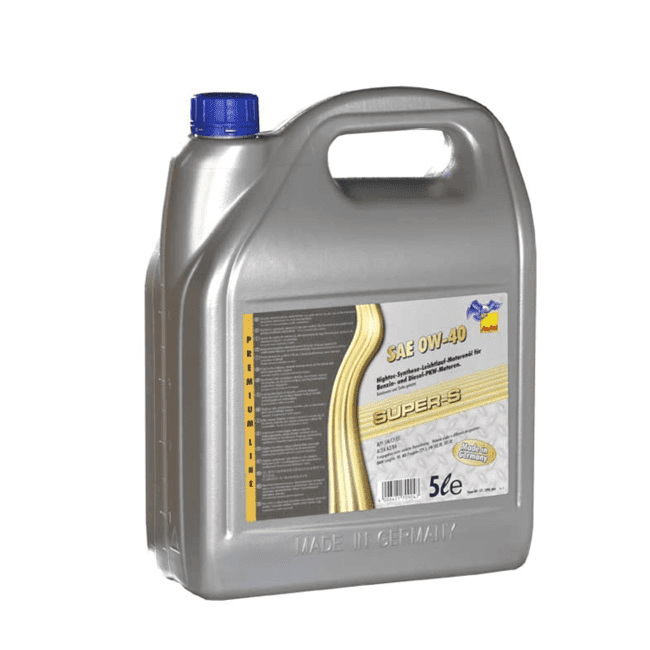
- Summer. This motor oil provides timely lubrication and protection of car parts in warm seasons, but is ineffective in cold weather. Their labels also have numbers: 20, 30, 40, 50 and 60. Contrary to a popular misconception, these numbers represent the kinematic viscosity of the oil at 100°С and not the maximum allowable ambient temperature.
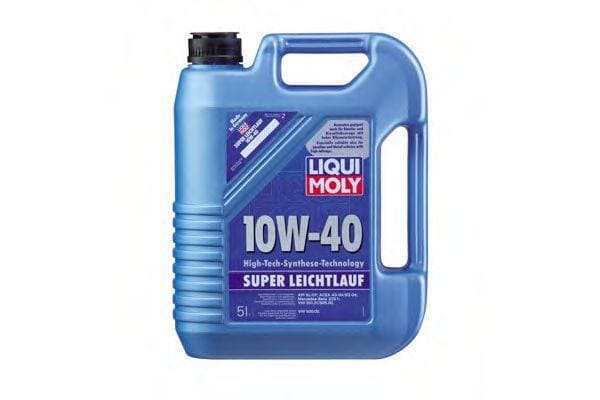
- All seasons. These are advertised as winter grade, which maintains both the minimum temperature and viscosity level at the maximum warm temperature: 5W-30, 10W-60, etc. Multi-season motor oils are currently the most commonly used.
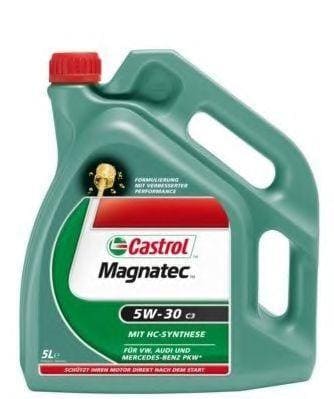
Tip from CarTipsandmore: Using synthetic oils all season helps save you money by not having to change it twice a year. If you frequently drive in urban areas with frequent stops, you often leave your car in unheated places and especially if you live in a region with severe winters, you should look for motor oils that are marked 0W or 5W. However, for a car with a worn drivetrain and larger gaps between the friction pairs, you will need a higher viscosity product.
Purpose of API classification

The American Petroleum Institute defines its own classifications to categorize motor oils based on formula and performance characteristics. It also makes it possible to indirectly assess the quality of the lubricants, recently the standards have become much stricter compared to previous years in the industry.
According to the API, all engine oils are divided into two categories, each of which contains several classes:
S. For petrol engines. There are currently four classes in most countries:
- SJ. Recommended for use in engines manufactured before 2001.
- SL. Suitable for Engines produced before 2004. Many vehicle manufacturers adopted SL as the minimum standard for servicing vehicles.
- SM. For drives manufactured in 2010 or earlier. SM oils are very effective at low temperatures, resistant to oxidation and formation of sediment. They retain their premium characteristics throughout their lifetime.
- SN. Introduced in 2010. Currently these are the oils that can ensure high engine protection and high efficiency. SN oils help to save fuel. You avoid premature wear of the turbocharger without aggressive effects on gaskets and seals.
C. This is the designation for motor oil for diesel cars. The classes currently used for cars of different model years are CH, CI, CJ and CK. The number 4 behind the class designations stands for 4-stroke vehicles.
Let's take a detailed look at grade C oils:
- CH-4. Introduced in 1998. It is suitable for drives running on high-quality fuel with a sulfur content of up to 0.5% by weight.
- CI-4. Introduced in 2002. This type of motor oil provides reliable protection of the drive train and exhaust system against soot deposits and prevents premature wear of the elements. Some lubricants in this class are CI-4 PLUS.
- CJ-4. They have higher temperature stability, oxidation resistance and longer service life.
- <CK. Designed to protect drives manufactured in 2017. However, these engine oils can also be used in earlier drive models.
There are universal lubricants that are well suited for both petrol and diesel engines. They have double designations, e.g. B. CН-4/SJ.
CarTipsandmore Tip: Many manufacturers advise using the latest oil to lubricate the engine. And in most cases this recommendation is correct: the younger the formula, the safer it is, but also more economical and environmentally friendly. However, this recommendation does not make sense for older vehicles, since their drives are designed differently and are not able to receive the maximum of all the benefits of a quality oil. Check your service book for more details on which lubricants should be used in your vehicle.
ACEA Performance Rating
Reducing emissions toxicity and lowering fuel consumption are one of the key requirements for modern lubricants. So many oils would state that they meet the latest ecology standards in the package.

According to the Association Constructeurs Européens d’Automobiles (ACEA), all motor oils suitable for purchase and use can be divided into the following categories:
- А. For petrol engines This category includes 3 classes: А1, А3 and А5. The letter precedes the number, which indicates environmental protection and viscosity under certain conditions. The numbers 1 and 5 indicate the fuel consumption, but otherwise they are just like the API: the larger the number, the better features the product has.
- В. This category includes lubricants for passenger and small vehicles using diesel fuel. They are also divided into classes: B1 and B5 represent fuel economy, while В3 and В4 are regular products.
- Е. Oils marked with this letter are for heavy duty trucks and special vehicle diesel engines. E1 stands for fuel consumption; The rest is standard.
Fuel consumption was a parameter that API specialists included to present a new denomination, EC (Energy Conserving).
These oils are characterized by a lower viscosity at very extreme increases in temperature, represent a smooth and regular movement of moving parts and reduce fuel consumption. However, this also means that a thinner lubricating film, which is very risky for older drives with a large mileage – these drives need extra protection.
Is a manufacturer release really necessary?
An item may work well on some drives while being a risk on others. This forces car manufacturers to test lubricants in their own facilities. If a product passes the test with the successful colors, it is marked accordingly, for example the BMW Longlife-98. This means that an oil can be used in vehicles of this brand with longer service intervals, manufactured in 1998 and later.
CarTipsandmore Tip: Always try to use the oil recommended by your car's manufacturer and don't experiment with viscosity levels. The risks lie in the fact that in some drives, the lubrication grooves are only thick enough for high-viscosity oils. Failure to do so will inevitably result in premature wear. At the same time, some car manufacturers, e.g. The BMW Group and Daimler AG are urgently moving away from low-viscosity lubricants in their vehicles due to the design of their drives.
What do different engine oil classifications have in common?
Despite their different principles, all classifications are closely related. For example, if a lubricant is API marked as SH, it cannot be an А1 or А5 according to ACEA as these requirements were not published until the SJ class came out. If a label is marked with А5, it means that the items are at least one SL according to API, i.e. it has longer change interval.
The fuel items with the designation А1, А5, В1 or В5 tend to be to have a temperature viscosity of 30 and less. Oils with a viscosity of 40 belong to А2, А3, В2, В3 and В4 classes and provide no fuel consumption.
Learn to read the labels
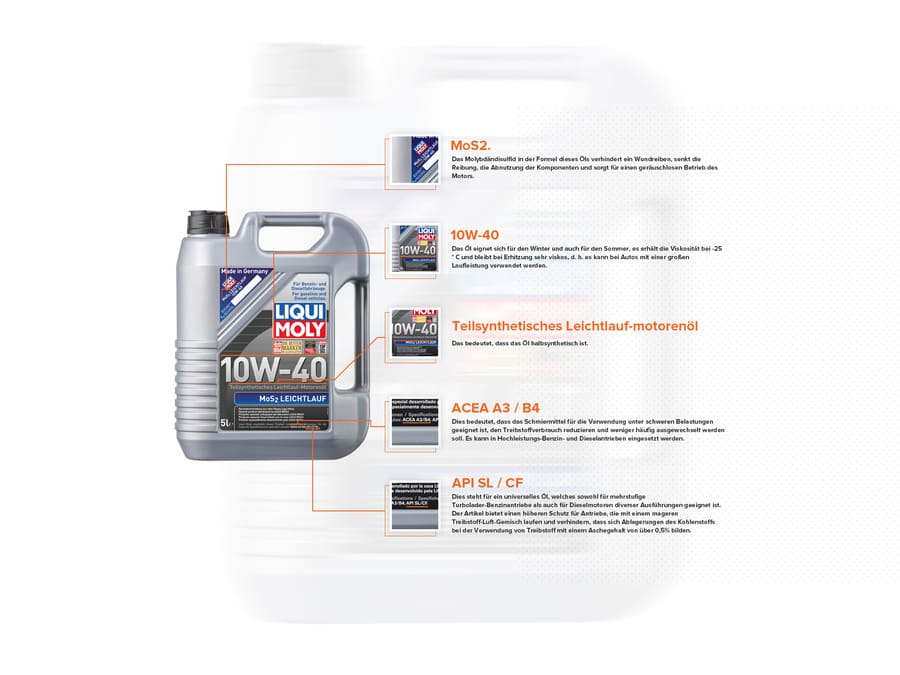
API SL/CF. This stands for a universal oil, which is suitable both for multi-stage turbocharger petrol drives and for diesel engines of various designs. The article provides increased protection for engines running on a lean fuel-air mixture and prevents carbon deposits from forming when using fuel with an ash content above 0.5%.
ACEA A3-04/B4-04. This means that the lubricant is suitable for use under heavy loads, reduces fuel consumption and should be replaced less frequently. It can be used in heavy-duty petrol and diesel powertrains.
10W-40. The oil is suitable for both winter and summer, it maintains viscosity at -25 ° С and when heated remains very viscous, i.e. H. it can be used on cars with high mileage.
MoS2. The molybdenum disulphide in the formula of this oil prevents chafing, reduces friction, component wear and cares for silent operation of the engine.
Semi-synthetic low-viscosity motor oil. This means that the oil is semi-synthetic.
To continue: When choosing lubricants for engines, one should follow the advice of the car manufacturer and not consider the cost or reputation of certain brands of oil. Make sure that the road conditions, your own driving style and other individual factors have to be taken into account. It's the only sure way to choose the right lubricant. Avoid fakes by following our tips and shop at CarTipsandmore!
